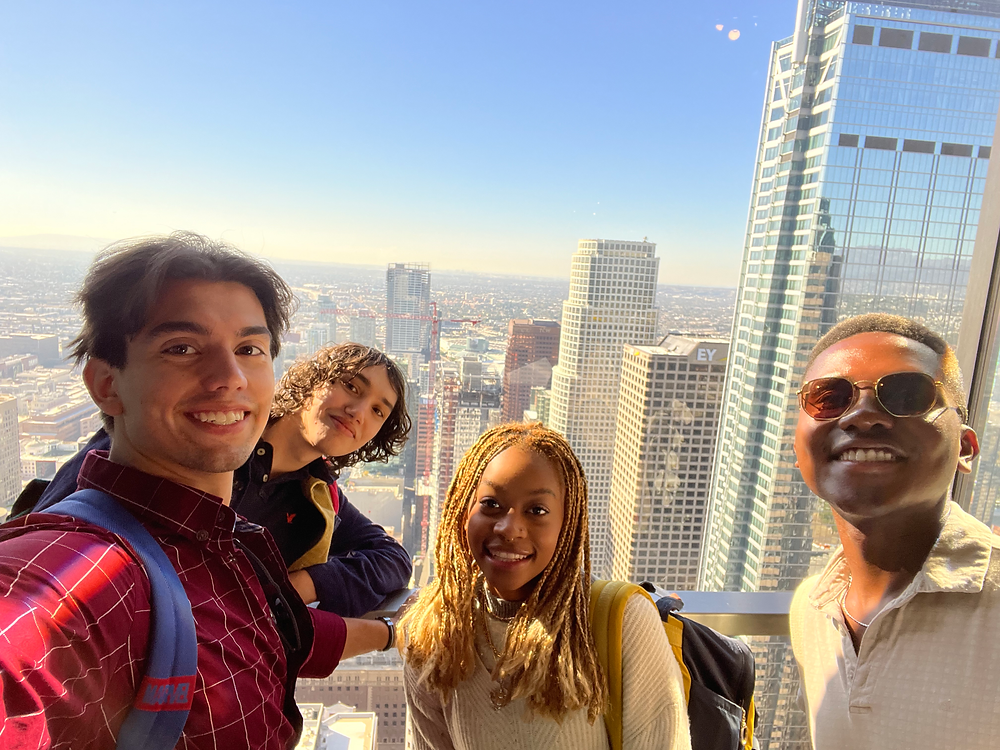I joined NMGZ in March 2020, right when the pandemic started. I had just returned from my canceled study abroad semester in Argentina when I became a member. Becoming a part of NMGZ was incredibly exciting, but joining as the world shut down was an isolating experience. So it wasn’t until November 2022 that I attended my first in-person NMGZ trip to Los Angeles.
NMGZ eclipsed my experiences with online conversations by being in the room with my peers and the executives. Of course, we all had an incredible time speaking with executives from companies with household names. Yet, meeting my fellow NMGZ members in person for the first time stood out to me the most. Especially in this day and age, when most things are online. And online can get lonely. But, unfortunately, I’ve come to learn that Americans, in general, are lonely.
Research commissioned by The Cigna Group (2021, Loneliness Epidemic Persists) states that 58% of the total US adult population was lonely. It rose to 79% of adults when only looking at ages 18 to 24. Moreover, among people aged 18-34, 42% report constantly feeling ‘left out,’ while the corresponding percentage for people aged 55 or older is 16%. So GenZers and millennials–like me and my peers–know loneliness and isolation too well. It’s not shocking to think of how much our lives are online. But it’s not just about us being online. Places where people could spontaneously and frequently run into each other, chat, deepen relationships, build community, and fight loneliness have faded.
Such spaces are called ‘third places.’ A sociologist coined the term. In a piece for The Brookings Institution, Stuart Butler and Carmen Diaz (2016) define it as “places where people spend time between home (‘first’ place) and work (‘second’ place). They are locations where we exchange ideas, have a good time, and build relationships.” As Butler and Diaz (2016) describe, third places have the potential to bring people of different backgrounds together as equals. That sounds great, but I can’t recall finding many of these places. Especially with COVID. I’m not alone in this.
In an article for Bloomberg, Allie Volpe (2021) notes how some kinds of “third places were already on the decline pre-pandemic” and that the pandemic could serve as a “death knell for a large population of brick-and-mortar third places.”
This societal-wide trend of third places going away has dramatically impacted our feelings of loneliness, especially for GenZers and millennials. For example, Butler and Diaz (2016) note how many third places for young Americans are online (such as Instagram), even though the most effective ‘third places’ center around physical environments.
I propose we pivot once again to ‘third’ places.
I see NMGZ as a sort of third place. I’m not meeting in person daily with other members and executives, and flying from Boston to LA is not something I’d always want to do. But the sense of community I felt while I was on the Los Angeles trip was strong. During our trip, we shared what diversity meant, completed scavenger hunts in groups, created spontaneous songs, danced, and became quick friends. The three days together were extraordinary.
Third places and organizations like NMGZ make the world a lot less lonely. Luckily, many institutions recognize the need for third places. For example, the City of Boston (2022) created the Third Spaces Lab to explore how the City government can boost third places.
We need to do more to promote third places. I also think doing so aligns with NMGZ’s mission: to engage in conversation that innovates, problem-solves, and dismisses misconceptions about us. Third places offer opportunities for people to do just this across society. And to make people feel good! Whatever your background may be, I urge you to find and support third places in and out of the workplace.

